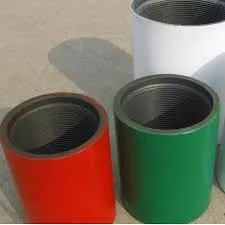- Afrikaans
- Albanian
- Amharic
- Arabic
- Armenian
- Azerbaijani
- Basque
- Belarusian
- Bengali
- Bosnian
- Bulgarian
- Catalan
- Cebuano
- Corsican
- Croatian
- Czech
- Danish
- Dutch
- English
- Esperanto
- Estonian
- Finnish
- French
- Frisian
- Galician
- Georgian
- German
- Greek
- Gujarati
- Haitian Creole
- hausa
- hawaiian
- Hebrew
- Hindi
- Miao
- Hungarian
- Icelandic
- igbo
- Indonesian
- irish
- Italian
- Japanese
- Javanese
- Kannada
- kazakh
- Khmer
- Rwandese
- Korean
- Kurdish
- Kyrgyz
- Lao
- Latin
- Latvian
- Lithuanian
- Luxembourgish
- Macedonian
- Malgashi
- Malay
- Malayalam
- Maltese
- Maori
- Marathi
- Mongolian
- Myanmar
- Nepali
- Norwegian
- Norwegian
- Occitan
- Pashto
- Persian
- Polish
- Portuguese
- Punjabi
- Romanian
- Russian
- Samoan
- Scottish Gaelic
- Serbian
- Sesotho
- Shona
- Sindhi
- Sinhala
- Slovak
- Slovenian
- Somali
- Spanish
- Sundanese
- Swahili
- Swedish
- Tagalog
- Tajik
- Tamil
- Tatar
- Telugu
- Thai
- Turkish
- Turkmen
- Ukrainian
- Urdu
- Uighur
- Uzbek
- Vietnamese
- Welsh
- Bantu
- Yiddish
- Yoruba
- Zulu
casing and tubing connections
Casing and Tubing Connections Essential Elements in Oil and Gas Operations
Casing and tubing are vital components in the drilling and production processes of oil and gas operations. Understanding the connections used in these systems is crucial for safety, efficiency, and performance optimization in the industry. This article will delve into the significance of casing and tubing connections, their types, and the factors influencing their selection.
Casing refers to the series of pipes installed in a drilled well to stabilize the wellbore and prevent the collapse of the surrounding geological formations. It also protects freshwater aquifers and allows for effective sealing of different zones within the well. On the other hand, tubing is a smaller diameter pipe that runs through the casing, facilitating the movement of hydrocarbons from the reservoir to the surface. The integrity of both casing and tubing depends largely on their connections, which are critical for ensuring the structural strength and preventing leaks during operation.
Types of connections vary based on the application and the specific requirements of the drilling environment. The most common connection types include threaded connections, welded connections, and slip-on connections. Each type has its advantages and potential limitations.
Threaded Connections involve a male and female end that screw together. They are commonly used due to their ease of installation and disassembly when maintenance is needed. However, improper threading can lead to leaks or failure under high pressures.
Welded Connections, on the other hand, offer a robust solution for high-pressure applications as they create a continuous metal bond between pipes. This type of connection is less susceptible to failure caused by external forces but can complicate repairs, as cutting and re-welding are necessary for pipe removal.
casing and tubing connections

Slip-On Connections are another option, allowing pipes to slide over each other before being welded. This method provides adequate strength and is easier to align; however, it requires precise measurements to ensure a secure fit.
When choosing the appropriate connections for casing and tubing, several factors come into play. The first is the environmental conditions, such as pressure and temperature, that the connection must withstand. High-pressure wells often necessitate stronger connections, meaning that welded or heavier-duty threaded connections may be required.
Another important consideration is the chemical compatibility of the materials used in connections with the fluids being transported. Corrosion resistance is of utmost importance, particularly in environments with hydrogen sulfide or carbon dioxide, which can degrade the integrity of the materials used in the connections.
Finally, the overall cost of the materials and installation can influence the choice of connections. While stronger materials and complex connections may offer long-term benefits, upfront costs are also a key consideration, especially for projects with tight budgets.
In conclusion, casing and tubing connections serve as the backbone of safe and efficient oil and gas extraction operations. Understanding the different types of connections, their applications, and the factors influencing choice is essential for successful project implementation. As the industry continues to evolve with new technologies and practices, the importance of reliable connections will remain pivotal in ensuring operational integrity and environmental safety.
-
Well Casing Extension Couplings – Applications and InstallationNewsJun.06,2025
-
Types of Crossover Subs in Drilling & CompletionNewsJun.06,2025
-
Key Features of High-Quality Tubing Pup JointsNewsJun.06,2025
-
Installation and Maintenance Tips for Steel Couplings for PipeNewsJun.06,2025
-
How to Select the Right Pup Joint for Oil & Gas OperationsNewsJun.06,2025
-
Applications of Stainless Steel Pipe CouplingsNewsJun.06,2025







